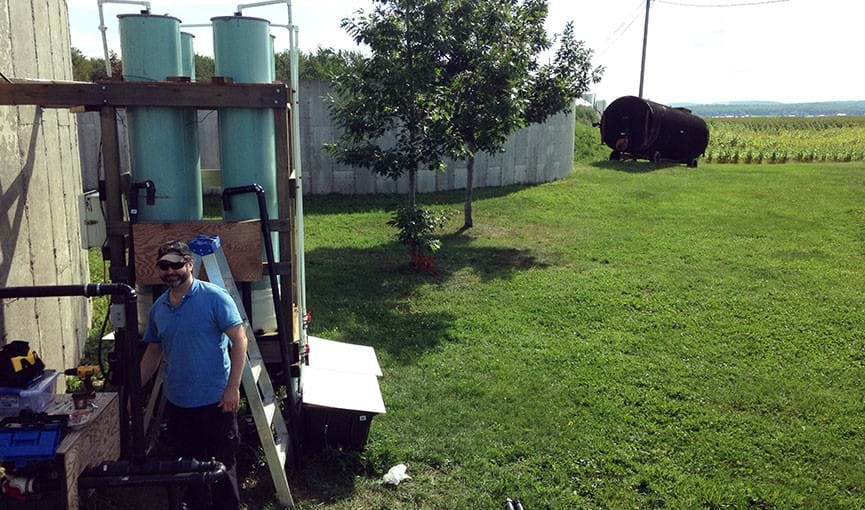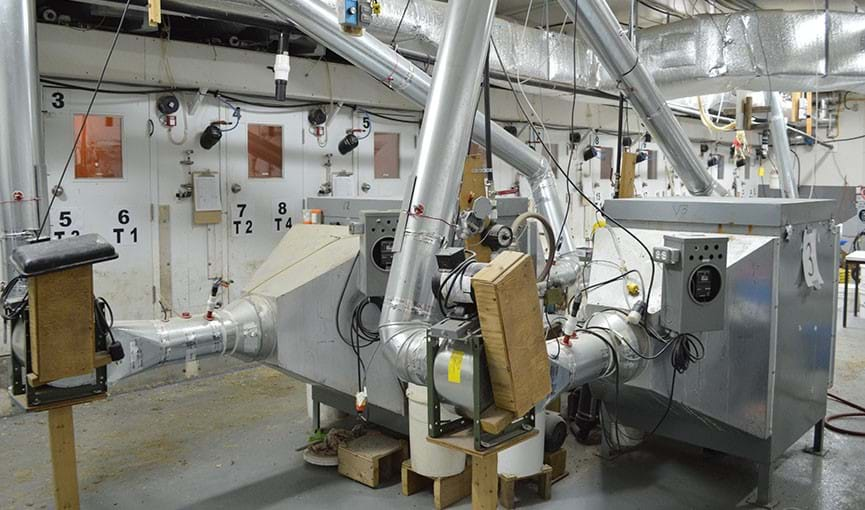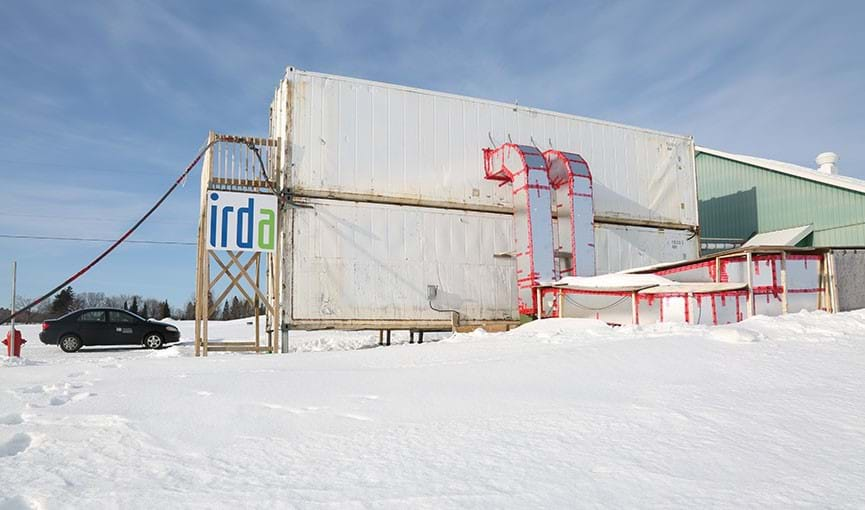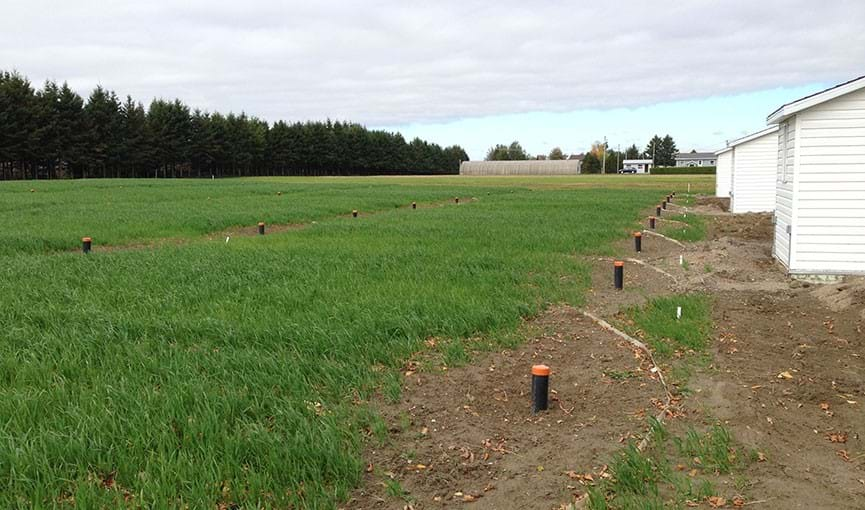Coexisting in an agricultural environment
Reconcile the needs of agricultural producers and their neighbours
Given that agriculture is a major economic driver and that global demand for agricultural commodities is on the rise, IRDA seeks to reconcile the needs of agricultural producers and their neighbours so they can coexist in harmony while allowing producers to pursue effective and eco-friendly agricultural practices.
IRDA’s R&D team specializes in the control of contaminants and odours arising from farm buildings and the advancement of knowledge on this topic. The team has assessed the effectiveness of a broad range of practices and developed new solutions for producers in these areas:
- Treating and reducing odours at the source
- Using separation distances
- Comparing fertilizer spreading techniques
- Changing animal diets and the use of feed additives
- Managing and treating manure
A proprietary air scrubbing system
IRDA has even developed a biofilter system to treat building air. Its performance has been demonstrated under real operating conditions—ammonia, dust, and odour emissions were cut by up to 92%. Air treatment units lower contaminant emissions from livestock buildings, lessen environmental impacts, and may even lead to greater social acceptance of swine farm expansion plans.
IRDA solutions promote the harmonious coexistence of farmers and the surrounding population.






